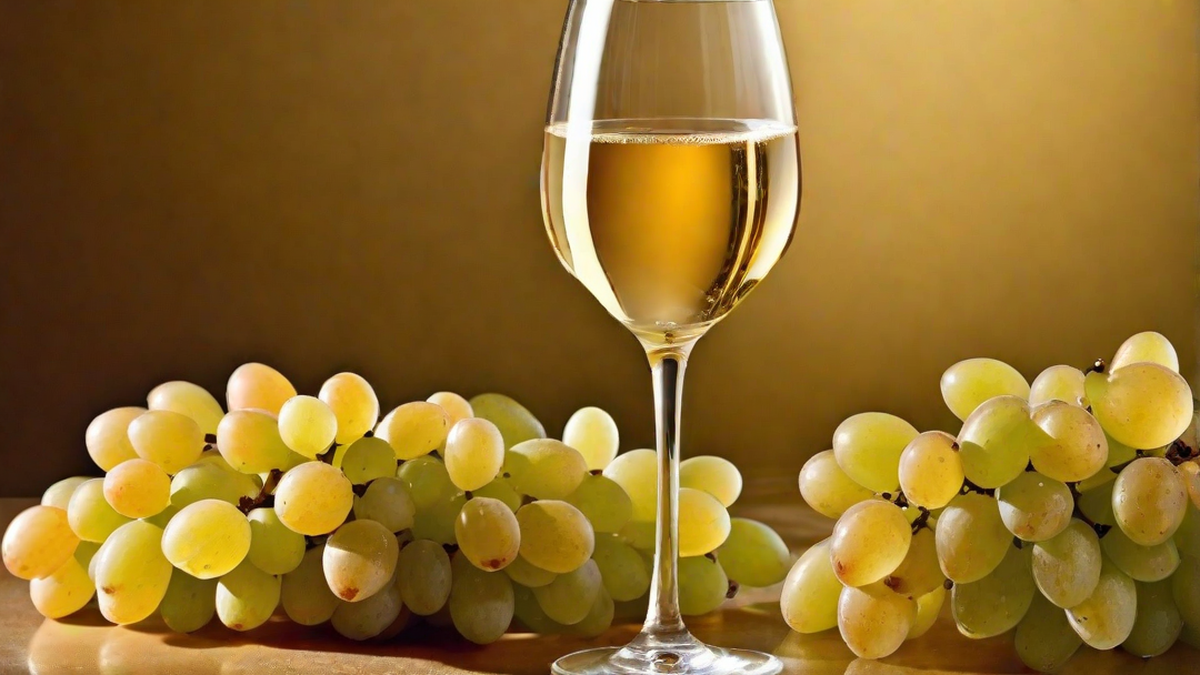Are you prepared to embark on a journey into the fascinating world of wine? Grab your glass. Get ready to indulge in the captivating realm of White Zinfandel. Prepare yourself for a fusion of flavors as we explore the mysteries surrounding this beloved wine. From its sweetness that will make your taste buds dance to its unique characteristics that set it apart from others we are here to satisfy your thirst, for knowledge. So sit back relax and allow us to unveil the secrets of White Zinfandel in all its wonderfully enjoyable splendor!
Sweetness Levels of White Zinfandel
White Zinfandel, a type of wine is often associated with sweetness. However is it truly sweet? Lets explore the sweetness levels of White Zinfandel and uncover the truth.
Contrary to what many people believe not all White Zinfandels are sweet. While some may indeed have a level of sweetness others can be quite dry. The amount of sweetness in White Zinfandel mostly depends on factors like how ripe the grapesre the fermentation process used and the preferences of the winemaker.
To gain an understanding of the sweetness in White Zinfandel we should take a closer look at its winemaking process. Typically crafted from red Zinfandel grapes the juice is separated from the grape skins on during fermentation. This limited contact with the skins leads to a color and less extraction of tannins.
During fermentation winemakers have control over how much residual sugar remains in the product. If they stop fermentation before all sugars are converted into alcohol it will result in a wine. Conversely if fermentation continues until all sugars are consumed by yeast a drier wine will be produced.
It’s worth noting that labeling regulations might not always accurately indicate the level of sweetness, in White Zinfandels. Wines labeled as “White Zinfandel” can vary from bone dry to noticeably sweet.To determine how sweet a White Zinfandel is it’s an idea to look for additional descriptions on the label such as “off dry ” “semi sweet ” or “sweet” before you buy or taste it.
When it comes to pairing food with White Zinfandels, their different levels of sweetness offer versatility. Sweeter versions go well with dishes or desserts while drier ones are a good match, for seafood or lighter meals.
In summary some White Zinfandels can be sweet and fruity while others have a drier taste. The important thing is to understand the labels and descriptions of wines so that you can find one that suits your personal preferences. So time you come across a bottle of White Zinfandel remember that sweetness levels can vary and trying different styles can bring pleasant surprises to your palate.
Characteristics of White Zinfandel
White Zinfandel has gained popularity among wine enthusiasts who have a preference for wines. It possesses qualities that differentiate it from other types of Zinfandel wines. One notable aspect of White Zinfandel is its sweetness, which stands out in contrast to its counterpart. The reason behind this lies in the fermentation process that White Zinfandel undergoes resulting in a higher concentration of residual sugar.
The sweetness of White Zinfandel can be attributed to the grapes used during production. These grapes are harvested at a stage of ripeness ensuring they retain more natural sugars. Alongside the abbreviated fermentation process these factors contribute to a sweeter taste on the palate.
In terms of flavor profile White Zinfandel showcases fruity notes ranging from strawberry and raspberry to melon and citrus. These flavors add to its sweetness and make it an invigorating choice for those who enjoy lighter fruit forward wines.
Another distinctive characteristic that sets White Zinfandel apart is its pink color. This hue stems from pigments called anthocyanins in the grape skins utilized during production. The duration of contact between the grape skins and juice, throughout fermentation determines the depth of color achieved in the wine product.
Despite its taste and appealing appearance White Zinfandel has sparked some controversy among wine enthusiasts. Some argue that it lacks complexity compared to types of wines and may be too sweet for their personal preferences. However there are others who appreciate it for what it brings to the table—an easy to enjoy option that pairs well with a variety of dishes.
To sum up white zinfandel is indeed a wine choice worth considering for those who enjoy fruity and approachable flavors. Its distinct characteristics set it apart from zinfandels available, in the market. Whether you’re enjoying it on a summer day or complementing it with your favorite meal white zinfandel offers a delightful sweetness that can be savored by both casual wine drinkers and connoisseurs alike.
Production Process of White Zinfandel
White Zinfandel is a liked wine that is famous for its sweet taste. Have you ever been curious about how this delightful drink’s made? Lets dive deeper into the production process of White Zinfandel and uncover the secrets behind its flavor.
The journey begins with the harvesting of Zinfandel grapes, which are mainly grown in California. These grapes are picked when they are perfectly ripe ensuring that they have sugar levels and develop a fantastic flavor. Once harvested the grapes are quickly transported to the winery to undergo the crucial step in the production process.
At the winery the grapes are gently crushed to release their juice. Unlike wines where grape skins remain in contact with the juice during fermentation White Zinfandel follows a different approach. The juice from grapes is promptly separated from their skins to minimize color extraction and reduce tannin presence. This separation helps maintain the wines light pink color and delicate characteristics.
After separation yeast is added to start fermentation. During this process yeast consumes the sugar in grape juice and converts it into alcohol. However when producing White Zinfandel winemakers often stop fermentation before all sugars have been converted into alcohol intentionally. This deliberate halt leaves, behind sugars that contribute to its sweet taste.
To achieve a balanced and complex flavor profile winemakers sometimes add a small amount of tartaric acid during or after fermentation. This careful adjustment helps create a balance between sweetness and acidity which is characteristic of White Zinfandel.
After fermentation is complete and the desired level of sweetness is achieved the wine goes through clarification processes like fining or filtration to remove any remaining solids or impurities. It is then briefly aged before being bottled for consumption.
In summary the sweet nature of White Zinfandel arises from factors including careful grape selection, gentle processing methods, intentional cessation of fermentation if needed and skillful blending. Each stage in its production contributes to the result resulting in a wine that is cherished by many for its refreshing sweetness and versatility. Whether enjoyed on its own or paired with dishes White Zinfandel continues to be a popular choice, among wine enthusiasts.
Serving and Pairing White Zinfandel
White Zinfandel is a loved wine renowned for its delightful and fruity taste. Its often enjoyed as an easy to drink choice especially in warmer seasons. When it comes to serving and pairing White Zinfandel there are an important things to consider.
Firstly the temperature at which it is served plays a role in enhancing the flavor of White Zinfandel. It’s best to serve it chilled, between 45 50°F (7 10°C) as this maintains its crispness while balancing out the sweetness. This temperature range allows the flavors to truly shine without overpowering your palate.
In terms of glassware its recommended to use a sized wine glass with a narrow rim. This helps concentrate the enticing aromas and directs them towards your nose as you take each sip. Additionally the shape of the glass allows for swirling and oxygenation ultimately enhancing your overall tasting experience.
When it comes to pairing White Zinfandel with food its inherent sweetness makes it versatile and suitable for dishes. Its fruity notes beautifully complement options like salads, seafood, grilled chicken or even spicier delights such, as Thai or Indian cuisine. The natural sweetness of this wine can effectively balance out spiciness while providing a contrast at the same time.
If you’re a fan of cheese you’ll be pleased to know that White Zinfandel goes well with soft cheeses like Brie or Camembert. The creamy textures of these cheeses perfectly complement the fruity notes in the wine. You can also try pairing it with hard cheeses like Gouda or Monterey Jack as they add a subtle savory touch that beautifully complements the natural sweetness of the wine.
When it comes to desserts White Zinfandel is a choice. Its inherent sweetness makes it an ideal match for fruit based treats such as peach cobbler or strawberry shortcake. The flavors of the dessert and wine mingle together creating an experience for your taste buds.
To sum it up White Zinfandel offers more than its sweetness – it has complexity too. Remember to serve it chilled to enjoy its flavors. Whether you’re serving salads, seafood or spicy dishes this versatile wine can create a wonderful balance. And don’t forget about pairing it with semi hard cheeses as well as fruit based desserts; they make for delightful companions, on your culinary journey. So go ahead. Savor the sweet and versatile nature of White Zinfandel in your next gastronomic adventure!
Conclusion
In conclusion, white Zinfandel is indeed a sweet wine. Its sweetness levels can vary depending on the winemaker’s style and the grapes used in its production. White Zinfandel is known for its fruity and refreshing characteristics, making it a popular choice among wine enthusiasts who prefer sweeter options. The production process involves carefully selecting and crushing the grapes, followed by fermentation and aging to create a well-balanced and flavorful wine. When serving white Zinfandel, it is best enjoyed chilled and pairs well with a variety of dishes, including spicy foods, salads, and light desserts. Whether you’re new to wine or a seasoned connoisseur, white Zinfandel offers a delightful and approachable option for those seeking a touch of sweetness in their glass.




